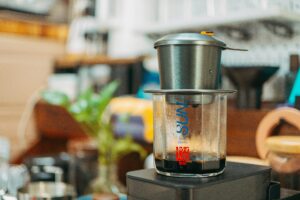Coffee is not just a beverage; it’s a ritual, a morning companion, and for many, a daily necessity. But what happens when that comforting cup turns bitter and undrinkable? Whether you’re a seasoned coffee enthusiast or a casual drinker, understanding how to make coffee less bitter can revolutionize your experience. This guide will walk you through practical tips and expert insights to ensure every sip brings joy to your taste buds.
The Science Behind Bitterness in Coffee
Why Does Coffee Taste Bitter?
Bitterness in coffee is primarily due to the natural compounds found in coffee beans. These compounds, including caffeine and chlorogenic acids, are essential for flavor but can become overwhelming if not managed correctly. The roasting process also plays a significant role. Darker roasts, while offering a robust flavor, can often lead to a more bitter taste if not brewed properly.
The Role of Extraction
Extraction is the process of dissolving coffee grounds with hot water to extract flavors. Over-extraction, where water pulls out too many bitter compounds, usually results from brewing too long or using water that’s too hot. Conversely, under-extraction can leave your coffee weak and sour.
Understanding Your Coffee Beans
Not all coffee beans are created equal. Arabica beans are known for their sweeter, more complex flavor profiles, while Robusta beans have a stronger, more bitter taste. Knowing the origin and type of your beans can help you anticipate and manage bitterness.
Choosing the Right Coffee Beans
Opt for High-Quality Beans
Investing in high-quality beans is the first step to a less bitter cup. Single-origin beans, often sourced from specific regions, tend to have unique, refined flavors compared to generic blends. Look for reputable brands that provide detailed information about their beans.
Experiment with Different Roasts
Light and medium roasts generally yield less bitterness compared to dark roasts. They preserve more of the beans’ natural flavors and offer a balanced profile. If you still prefer the boldness of a dark roast, try to find one with tasting notes that highlight sweetness or nuttiness.
Freshness Matters
Coffee beans start to lose their flavor shortly after roasting. To ensure a fresh brew, buy whole beans and grind them just before brewing. Store your beans in an airtight container away from light, heat, and moisture.
Mastering the Brewing Process
Proper Grinding Techniques
The grind size significantly affects the extraction process. Too fine a grind can lead to over-extraction and bitterness, while too coarse a grind can result in under-extraction. Experiment with different grind sizes to find the sweet spot for your preferred brewing method.
Water Quality and Temperature
Water quality can make or break your coffee. Use filtered water to avoid impurities that can alter the taste. The ideal brewing temperature is between 195°F and 205°F (90°C to 96°C). Water that’s too hot can over-extract bitter compounds, while cooler water might under-extract flavors.
Perfecting Your Brew Time
Each brewing method has an optimal brew time. For example, a drip coffee maker typically takes about 5 minutes, while a French press should steep for 4 minutes. Experiment with timing to find the balance that works best for you.
Enhancing Your Coffee Experience
Adding a Pinch of Salt
It may sound unconventional, but adding a pinch of salt to your coffee grounds can neutralize bitterness. Salt counteracts the harsh flavors without altering the overall taste of your coffee.
Explore Milk and Creamers
Adding milk or cream can soften the bitter notes in coffee. Dairy products contain fats that coat your tongue, reducing the perception of bitterness. Plant-based alternatives like almond or oat milk can also provide a creamy texture and mellow flavor.
Sweeten to Taste
A touch of sweetener can balance the bitterness. While sugar is the most common choice, natural alternatives like honey, maple syrup, or agave can add unique flavors. Be cautious with sweeteners to avoid overpowering the coffee’s natural taste.
Advanced Techniques for Reducing Bitterness
Cold Brew Method
Cold brewing is an excellent way to reduce bitterness. By steeping coffee grounds in cold water for 12-24 hours, you extract fewer bitter compounds, resulting in a smoother, sweeter cup. Cold brew can be enjoyed over ice or heated up for a warm beverage.
Pre-Infusion or Blooming
Pre-infusion, also known as blooming, involves wetting the coffee grounds with a small amount of water before the actual brewing process begins. This technique allows gases to escape and ensures more even extraction, leading to a balanced flavor.
Using a Coffee Scale
Precision is key in coffee brewing. Using a coffee scale helps you measure the exact amount of coffee and water, ensuring consistency and reducing the chances of over or under-extraction. Aim for a coffee-to-water ratio of 1:15 to 1:17 for the best results.
Common Mistakes to Avoid
Using Stale Beans
Stale beans can ruin your coffee experience. Always check the roast date and try to use beans within a month of roasting. Avoid pre-ground coffee as it loses freshness quickly.
Ignoring Cleaning Maintenance
Residue from previous brews can build up in your coffee maker and contribute to bitterness. Regularly clean your equipment to ensure a fresh taste every time. Follow the manufacturer’s instructions for the best cleaning practices.
Overlooking the Importance of Ratios
Using too much coffee or too little water can lead to an overly strong and bitter brew. Stick to recommended ratios and adjust gradually to suit your taste preferences.
Exploring Different Brewing Methods
French Press
The French press offers a full-bodied, rich coffee experience. To reduce bitterness, use a coarse grind and brew for about 4 minutes. Press gently to avoid over-extraction.
Pour Over
Pour-over methods, like the Hario V60 or Chemex, allow for precise control over the brewing process. Use a medium grind and pour water in a slow, circular motion for even extraction and a cleaner taste.
Espresso
Espresso is intense by nature, but it doesn’t have to be bitter. Ensure your grind size is fine but not too fine, and aim for a brew time of around 25-30 seconds. Proper tamping and fresh beans are essential for a smooth shot.
Building Your Perfect Cup
Tasting and Adjusting
Taste your coffee at different stages of the brewing process. Note any bitterness and adjust your techniques accordingly. Keep a journal to track changes and preferences.
Pairing with Food
Certain foods can complement and reduce bitterness in coffee. Try pairing your brew with pastries, fruits, or cheese to enhance the overall flavor experience.
Enjoying the Ritual
Making coffee is an art and a ritual. Take the time to enjoy the process, experiment with different methods, and savor each cup. The joy of coffee lies in the journey as much as the destination.
Conclusion
Bitterness in coffee is a common challenge, but with the right knowledge and techniques, you can transform your morning cup into a delightful experience. By understanding the science behind bitterness, choosing the right beans, mastering the brewing process, and experimenting with advanced methods, you’ll unlock a world of flavors and enjoy coffee like never before.
Ready to elevate your coffee game? Start implementing these tips today and discover the joy of a perfectly balanced brew. For personalized advice and product recommendations, explore our additional resources and join our community of coffee enthusiasts.
FAQs
Why does my coffee taste bitter?
Bitterness in coffee can result from over-extraction, using stale beans, or brewing at too high a temperature. Adjusting your grind size, water temperature, and brew time can help.
What is the best grind size to reduce bitterness?
A medium grind is generally recommended for most brewing methods. However, adjusting the grind size based on your specific method can significantly reduce bitterness.
Can adding salt really reduce bitterness in coffee?
Yes, a small pinch of salt can neutralize the bitter compounds in coffee, making it taste smoother without altering the overall flavor profile.






